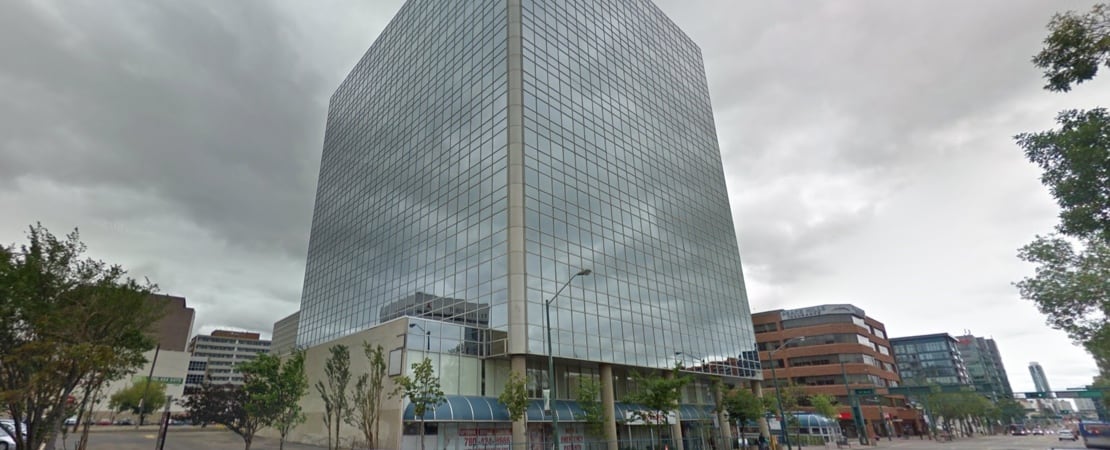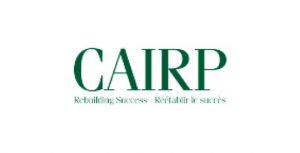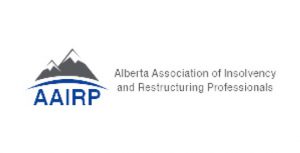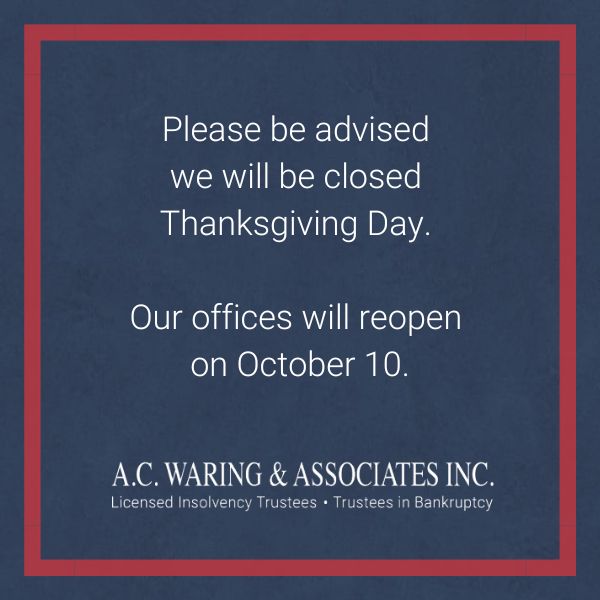What Is Personal Bankruptcy?
No one wishes to file bankruptcy during their lifetime, but it is an option if you find yourself without enough resources to pay your debt. Declaring personal bankruptcy can provide you with an opportunity to start fresh and get your credit back where it needs to be.
Personal bankruptcy is declared when an individual (also known as a debtor) is unable to repay their debts for a number of reasons.


The Bankruptcy Process
Learn more about the bankruptcy process requirements, what you need, and what you can expect.
Requirements
The Bankruptcy and Insolvency Act lays out very general requirements to be considered for bankruptcy. To qualify, you:
- Must be a resident of Canada
- Are unable to pay your bills when they are due
- Owe more than $1,000
What You Will Need
Once you have met with a Licensed Insolvency Trustee, you will review your entire financial situation. Your particular circumstances will determine the method of debt resolution they may suggest to you.
For this meeting, you should have lists of your creditors and assets, your personal information (name, birthdate, address), and provide your trustee with detailed income and expense information.
After you and your trustee go over your options, the next step is to have documents prepared for signature to file for bankruptcy should bankruptcy be the decided debt resolution.
Timelines & Expectations
If this is the first time you have filed for bankruptcy, you will be in a state of bankruptcy for 9 to 21 months.
During this period, there will be a “stay of proceedings,” which means unsecured creditors cannot continue to pursue payments, begin or continue lawsuits, or garnish wages.
You will also need to attend 2 financial counselling sessions regarding money management issues.
Your bankruptcy ends when you receive your “discharge,” effectively freeing you from all your debts. Your period in bankruptcy might be extended if you are making a surplus income in excess of the income limit set by the federal government. This may also require a portion of the income to be paid towards your bankruptcy.
The discharge may also be extended if this is not your first bankruptcy.
Advantages & Disadvantages of Personal Bankruptcy
Advantages
- Provides legal protection from unsecured creditors
- Halts debt collecting agents
- Ensures essential services such as gas, water, etc.
- Eliminates most unsecured debts
- Cost is inexpensive compared to the amount of debt owing
Disadvantages
- Co-signers on loans will become responsible for said loans
- Some debts might still be enforceable (secured creditors)
- Credit cards must be turned over to the trustee
- Credit rating, already affected for up to 6 years, will include notification of bankruptcy on all credit reports
How Debts Are Addressed
Debts are classified under different categories. Read about unsecured debts, secured debts, assets, and liabilities.
Unsecured Debts & Secured Debts
There are 2 types of debts you can procure: unsecured debts and secured debts. Most unsecured debts can be discharged after the set bankruptcy period. Some of these debts include:
- Credit card balances
- Bank loans
- Unpaid utility bills
- Payday loans
However, some unsecured loans will not be released upon discharge, including:
- Student loans less than 7 years old
- Child/spousal support
- Court-ordered fines and debts
Secured debts, like a mortgage on real estate or a car loan, will also remain in place notwithstanding filing for bankruptcy unless the asset is foreclosed or repossessed.
Assets & Liabilities
Quite simply, assets are what you own, and liabilities are what you owe. Assets can include chequing and savings accounts, cars, houses, furniture, or even artwork. Liabilities are debts like mortgages, car payments, and credit card balances.
The value of your assets and liabilities is a conversation you will have with your trustee. Many assets, however, are exempt from bankruptcy pursuant to provincial law.
What’s Next?
After the 9-month bankruptcy period, unsecured debts will be wiped away and you will no longer be responsible for them.
Declaring bankruptcy may or may not significantly affect your credit rating. Usually, insolvent individuals already have delinquent accounts that negatively affect their credit bureau standing. That said, it is an opportunity for you to set yourself on the right path towards improved financial planning and financial independence.
A.C. Waring & Associates can help you make a plan to get out of your financial difficulties. Call us now and get started.
Where To Find Us
Find us in the First Edmonton Place building on the corner of Jasper Avenue and 107th Street, behind the Corona LRT Station. Street meter parking is available along Jasper Avenue as well as 106th and 107th Streets, and paid surface parking is off of 106th Street, and underground parking for First Edmonton Place is off of 107th Street.

A.C. Waring &
Associates Inc.
- First Edmonton Place
410-10655 Jasper Ave NW - Edmonton, AB T5J 3S9
Contact
Information
- Phone: 780-424-9944
Hours Of Operation
- Monday: 8:30 AM – 5:00 PM
- Tuesday: 8:30 AM – 5:00 PM
- Wednesday: 8:30 AM – 5:00 PM
- Thursday: 8:30 AM – 5:00 PM
- Friday: 8:30 AM – 5:00 PM
- Saturday: Closed
- Sunday: Closed
Our Google Reviews

Our Testimonials
Dealing with the wonderful people at A.C. Waring has made a traumatic experience hurt a whole lot less.
Everyone there has treated me with nothing but the utmost respect and kindness.
I have nothing but high praise for everyone there.”
J.G.
“Thank You!
Thanks to Stan and everyone at A. C. Waring for making this process simple and easy.”
R.C.
“I appreciate your kindness
Kim was really good. I always felt calmer after talking with her. Please let her know I appreciate your kindness.”
C.G.
“Shanaz, thank you for your understanding, thoughtful support and advice through an extremely difficult time assisting us in resolving our financial difficulties and allowing us an opportunity to get back on our feet.
We are extremely grateful to you and your company for the important service you provide to people and families facing financial adversary in these trying times.”
M & H.
“Thank you!
Dear Pat, Thanks again for your Totally Awesome help!!”
M.V.
Fern,
Thank you so much for making my life better. It means so much that I can at least get up in the morning! Thank you again.
J.K.
“Shanaz and Team!
Our heartfelt gratitude to you all. You provide such an important and life changing service and there are no words to express how grateful we are for all you do.”
K & R
“Although we are not done with our bankruptcy yet we just wanted to say thank you for taking a totally overwhelming situation and making it so much easier for us. You have explained everything along the way and reassured us that we will get through this. Stan has always been there when we had questions. I’m so glad you have been there for us. Thanx for all you do.”
S & G
“To the most sweetest Lady EVER…
Thank you so much for being there for us, for helping us out and for giving us a second chance at our financial life. If it wasn’t for you we would not be where we are right now and probably would not have been able to move back home this quickly and unexpectedly.
So thank you for all that you have done for us and continue to do. You and your company have been a life saver, changed our lives (both us and kids) in all aspects and ways possible! We will forever be grateful to you and hopefully one day be able to physically see you and give you a HUGE hug.
Take care, and if you ever travel our way to Eastern Canada, please contact us…our door will always be open to you and your loved ones!!!”
J.B. and L.B. Family
“Very grateful!
Dear Shanaz,
Thank you for all you’ve done for me, I am very grateful for you! God bless you Shanaz.”
JT
“What truly matters…
Thank you so much for taking the time to speak with me today. I know how incredibly busy you are, yet you made me feel like a special person and someone who is valued. You probably make all of your clients feel that they.
Please tell others to never give up hope and to keep their loved ones close, as that is truly what matters.”
H. & G.
“Thank you so much!
It was great meeting you. Thank you so much for explaining the bankruptcy process to my brother and I. You are very knowledgeable and friendly and you helped my brother a lot.”
E.S.
“Shanaz, Thank you for your guidance and expertise.
Shanaz, Thank you for your guidance and expertise. I appreciate all the help you have given me. Seriously, Thank You from the bottom of my heart! (I’m no doctor, but apparently that’s where the most grateful part is.)”
C.M.
“Thank You
Arthur, Heather and Beth,
Thank you 1000 x 5!!”
M.S.
“Thank you for your help!
Hi Shanaz, I had a second and wanted to thank you for your help!”
L.D.
“Thank you for all you’ve done
Thank you so much for all your help! I appreciate all that you have done for me!”
C.
“Thanks and Appreciation
With thanks and appreciation for your help”
D.A.
“Thank you
Just want to say Thank You for all your help.”
J.T.
“Thank you so much for all your kindness, wisdom and support.
We are so grateful for you.
We will gladly refer our friends and family to you.
Many beautiful blessings in your life.”
T. and T.B.
“Good Morning
I would like to thank the staff for helping me during my bankruptcy.
Thanks once again.”
J.B.
“Happy New Year to Everybody
Because of you guys i was able to have a better holiday.
Thank you so much.”
G.L.
“Thank you and your Company for your assistance
I am writing this letter to thank you and your Company for your assistance at my hard times. I was your client in 2015-2017. At that period you supported me both financially and even psychologically. Your professional advice and tact helped me greatly to overcome my temporal financial difficulties and to keep the power to live further. Moreover, you and your highly qualified personnel, especially Beth Bui, who was my adviser at that time, did your best. As a result, I even managed to avoid my depression.
Once again, I just wanted to let you know how much I’ve appreciated your advice and assistance.
Yours truly,”
I.K.
“Much appreciated.
Thank you Shanaz, for all your help. Much appreciated.”
Mr. and Mrs. B
“Your staff are great
Arthur, it was good to talk to you. Your staff are great too and I have learned a lot. Thank you.”
G.
“Thank you for all the help
Dear Shanaz,
I want to thank you for all the help you have done for me. Hope things are well with you and your family.
Thank you so very much,”
J.T.
“Such a good experience
Such a good experience. After a change in finances left us without many options, so glad A. C. Waring and Associates have been there every step of our recovery process.”
R.F.
“I can’t thank you enough
Dear Shanaz:
Hope things are going okay with you and my accounts. If You need to call me please do. I can’t thank you enough for what you are doing for me. Please take care,
Yours truly,”
Joyce
“Thank You for Being Thoughtful
To the A C Waring & Associates Family,
Thank you for being so thoughtful. You can’t imagine how much it’s appreciated.”
M and R P-K
“Appreciate Your Consideration
Hello Shanaz,
You are a very special and dear person. I so appreciate your consideration!
Sincerely,”
DB
“Always There for Me
To AnnMarie:
Just a Thank You for all your help at a time in my life that was very hard for me. You were always there for me even when I could be a pain. Your help through this process helped me so much. I would like to thank everyone that had a part in the process from beginning to end. Thank you all. Also I feel I should include the wonderful man that hired all these great people, Mr. Arthur Waring. Bless you all. Thank you all again for all your help through the bankruptcy. All the best in all of your futures. You are a great bunch of people. Thank you with all of my heart.”
V.N.
“Made Our Lives Better
Shanaz,
My husband and I cannot thank you enough for all of your assistance. You have made our lives so much better. I hope you have a wonderful New Year.”
Mr. and Mrs. H
“Thank You
Arthur, Heather and Staff,
Thank you for all your help.”
Mr. and Mrs. C
“Appreciated Your Help
AnneMarie,
I appreciated all your help in this solution. Wishing you and yours all the best!”
RG
“Truly an Angel
Shanaz,
Thank you for everything you have done for us and our family. We will keep referring to you! You truly are an Angel.”
M
“Thanks for everything
Hi Fern,
Thanks for everything. Sept 9th was stressful & exciting! Soooo glad I’m “done”.
Thanks-thanks-thanks.”
C.K.
“Helping You When You Need It
Merry Christmas:
I’d like to thank you for getting me through a tough time.”
R
“Thank you for your patience
Fern and Arthur
Thank you for your patience in this trying period for me. Your patience and calmness have been very much appreciated as I worked through this. I never in my life thought I would be going through bankruptcy, it has been most disconcerting. That said, there is reassurance in Karma now that the police have just about finalized the materials to charge and try Mr. C. Thank you once again.”
W.K.
“Thanks to You Both
Hi AnneMarie and Dana,
I just want to take a minute to thank the both of you for all of your assistance in getting me through this.”
DJ
“Special & Dear
Hello Shanaz,
You are a very special and dear person. I so appreciate your consideration!”
DB
“Much Appreciated
Dear Fern,
I appreciated everything for your goodness to me. God bless.”
RB
“Made Our Lives Better
Shanaz,
We cannot thank you enough for all of your assistance. You have made our lives so much better.”
S and SH
“Helping You Find a Fresh Start
Dear Laverne,
Thank you for all your help, patience and understanding during this last year in my bankruptcy. I am glad to put this part of my life behind me and start fresh. I could not have done it without the support you and the staff at A.C. Waring & Associates Inc. offered me.
Thank you,”
A
“Life a Lot Less Stressful
Thank you, Shanaz, again, for all that you have done for us. Too bad we did not do this a lot sooner. It sure opened our eyes and life is a lot less stressful when you don’t receive phone calls from creditors. Thanks again.
God bless you all.”
L and DR
“Great Professionalism
A.C. Waring & Associates,
I would like to thank you very much for the great effort you have shown in arranging the many details required for finalizing the contract design.
Great professionalism.”
F
“Thanks So Much
This poem sent to Shanaz:
“Some impart wisdom or comfort and care.
Some point out the path, and some take you there.
Some warm the heart with a human touch.
You have all these gifts…
Thanks so much.”
M and AA
“Personal Service
Thank you Mr. Waring and Laverne:
I thank you for all your help in encouraging me through this insolvency. I am finally getting on my feet again.
Thanks,”
R
“Beyond Expectations
Hi Shanaz,
I can’t thank you enough, but I hope you know that Dave and I appreciate everything you’ve done. We were even able to put some monies aside. It is a very good feeling to be able to pay for things in cash. Thank you again. We will be in touch with you later.”
L and D
“Professional Support
Dear Laverne,
Just a short note to thank you for all your help involving my file (sorry I’m a bit tardy sending you this card). Approximately mid-August I experienced a relapse and I just started getting back on my feet. I sincerely appreciate the support and guidance you afforded me! All the best to you in the future, take care.
Sincerely,”
D
“Debt Experts
Hi AnneMarie,
I am sorry for the late reply. I received the discharge 2 weeks ago. At work, there’re a lot of things to do. Home is no different. I thank you and A.C. Waring & Associates Inc. very very much for helping me. Without A.C. Waring & Associates and you, my life would have been miserable. With your help and ADDAC classes, I am on the right track. I want to be on this track forever. I don’t want to think of the place that ruined my life. I was not very smart when I made this big mistake.
Thank you AnneMarie,”
W
“Much Appreciated
Fern and Arthur,
Thank you for your patience in this trying period for me. Your patience and calmness have been very much appreciated as I worked through this. I never in my life thought I would be going through a bankruptcy. It has been most disconcerting. That said, there is a reassurance in karma now that the police have just about finalized the materials to charge and try Mr. C.
Thank you once again,”
WK
“Help Starting Over
Good Morning Shanaz,
All of this (debt) has been weighing on my mind for far too long. I can’t thank you enough for all your advice, help and time.
You are truly a beautiful lady with a genuine soul. I hope everything works out for me. I just need to start fresh and over…”
J.C.
“Kindness & Compassion
Thank you for your kindness and compassion. May God richly bless you and your family.”
M. and S.
“Made it Come Through
Thanks for all the effort you put into marking this come through. Thank you!”
N.C.
“Sincere Appreciation
A very special thank you with sincere appreciation.”
K.V.
“Thank You for Your Kindess
Thank you, Heather, for being so patient and kind to me. Many blessings.”
D
“All the Best for 2015
Heather,
All the best for 2015. Thanks!!!”
J and M
“Good Morning Shanaz & Kim,
I’ve had you ladies on my mind lots lately, and just wanted to reach out to tell you thanks!
I can’t believe it’s been 5 years ~ and I’m at the finish line of this part of my life. One more payment ~ whoopie!!!!
I owe you two a million thanks! Not only for setting me up for positive change in my life, but also for your kindness, compassion, and understanding throughout this whole process! I couldn’t have done it without you both!
Kindest regards,
L.”
L.
“Dear Ken, Thank you for your excellent advice.”
J.F.
Thank you for your invaluable assistance in resolving this matter. I highly recommend AC Waring and Associates to anyone I know who may be experiencing difficulties, as my family and I did.
Doug
Management + Staff, Thank you for your kindness & WAKING ME UP.
Peggy
Blog
What Happens to Debt When You Die?
Debt ManagementIn Canada, your debt does not disappear when you die—it is typically paid by your estate. […]
Insolvency vs. Bankruptcy: The Key Differences & Why It Matters
BankruptcyInsolvency refers to the financial state of being unable to pay one’s debts as they become due, whereas bankruptcy is a specific legal process designed to resolve this state. […]
How To Pay Off Credit Card Debt Fast
Debt ManagementThe fastest way to pay off credit card debt is to combine strategic repayment methods, budgeting, and tools that reduce interest rates. […]
What Happens to Debt When You Die?

In Canada, your debt does not disappear when you die—it is typically paid by your estate. […]
Insolvency vs. Bankruptcy: The Key Differences & Why It Matters

Insolvency refers to the financial state of being unable to pay one’s debts as they become due, whereas bankruptcy is a specific legal process designed to resolve this state. […]
How To Pay Off Credit Card Debt Fast

The fastest way to pay off credit card debt is to combine strategic repayment methods, budgeting, and tools that reduce interest rates. […]
Professional Affiliations





